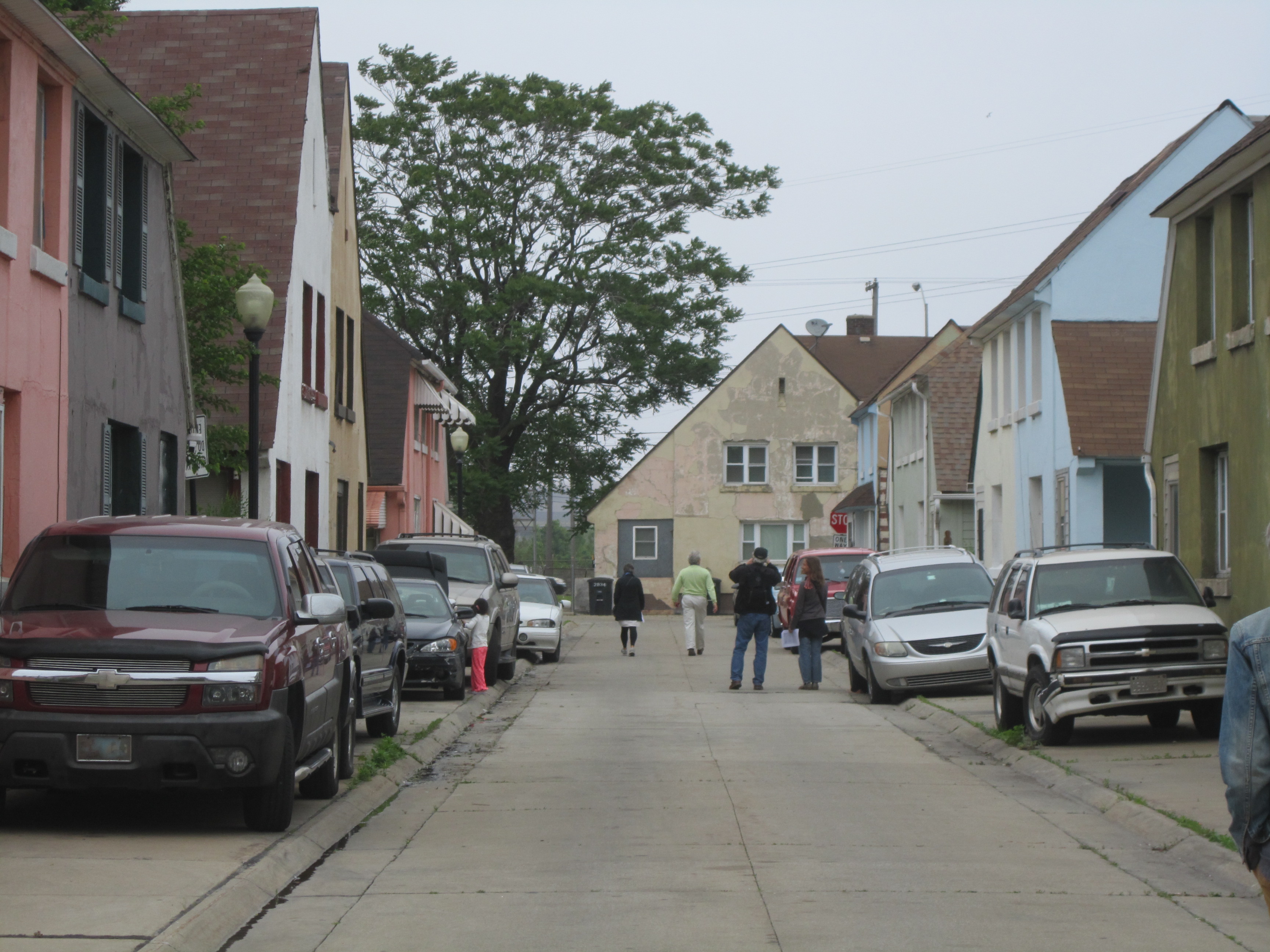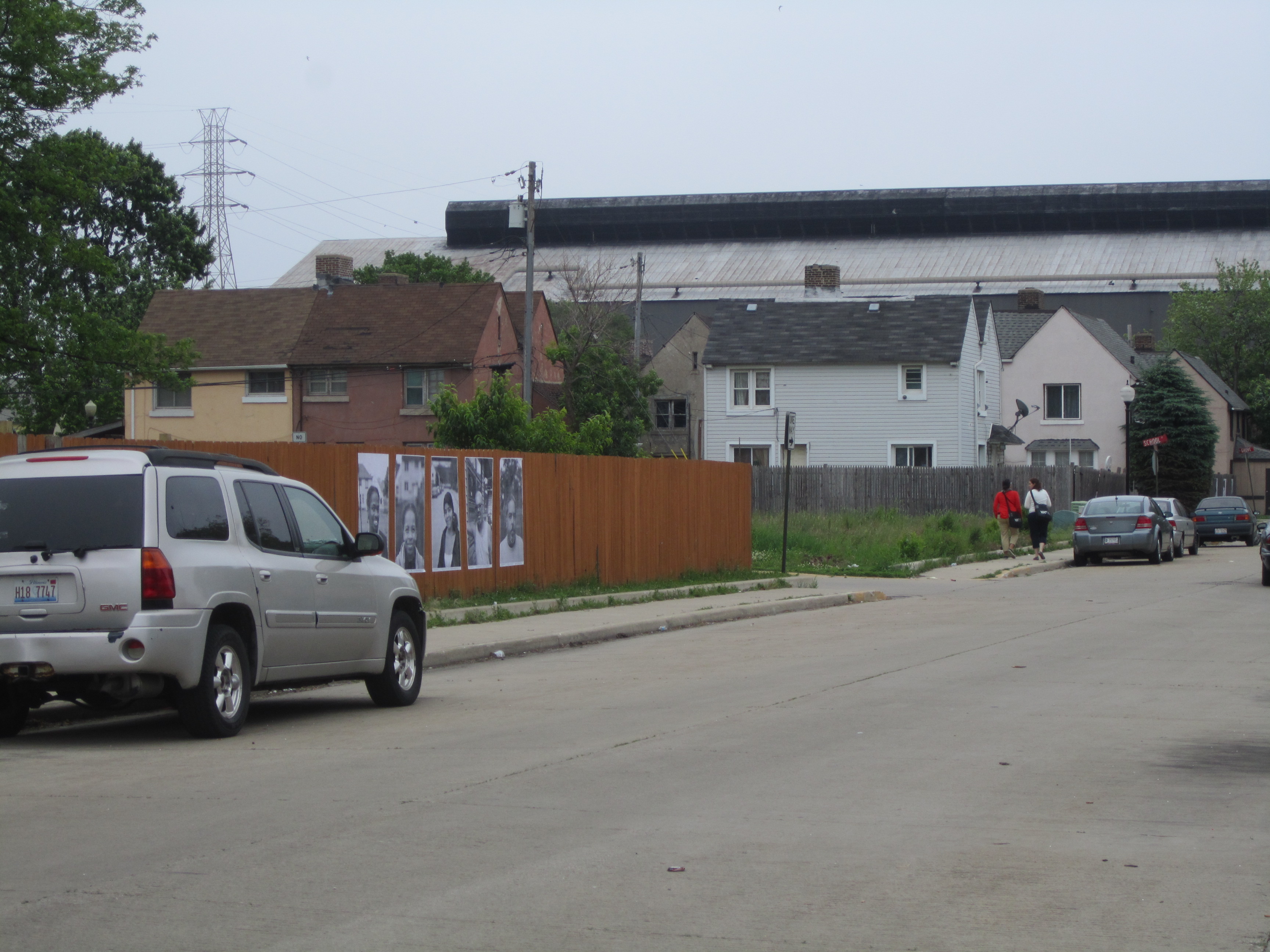by Gretchen Buggeln, VAF President
 I live in Northwest Indiana, about an hour from the southern border of the city of Chicago. No single experience has ever helped me to better understand the texture of Chicago—its history, its architecture, its challenges, and its possibilities—than our recent VAF conference. From the opening reception at Salvage One, with Davarian Baldwin’s provocative lecture about preservation and race in the Southside, to the closing banquet when we packed into Boni Vivo for great Italian food and lively conversation, the conference was filled with memorable sights and new ideas.
I live in Northwest Indiana, about an hour from the southern border of the city of Chicago. No single experience has ever helped me to better understand the texture of Chicago—its history, its architecture, its challenges, and its possibilities—than our recent VAF conference. From the opening reception at Salvage One, with Davarian Baldwin’s provocative lecture about preservation and race in the Southside, to the closing banquet when we packed into Boni Vivo for great Italian food and lively conversation, the conference was filled with memorable sights and new ideas.
Past VAF conferences in New York (2006) and Washington, D.C. (2010) proved that we could profitably move ourselves and our vernacular approach to the big city for an annual meeting. The idea of a Chicago VAF had enticed us for some time, but it wasn’t until Virginia (Gigi) Price took on the enormous task of organizing this conference—while herself living in Washington, D.C.—that the idea became reality. Although many minds and hands crafted our meeting in Chicago, without Gigi’s enthusiasm and persistent effort, it never would have happened. Gigi—an enormous thanks from all of us! Our thanks go out as well to all the conference partners, especially Brad Hunt, our host at centrally-located and beautifully-equipped Roosevelt University.
The conference, titled “Out of the Loop,” promised to take attendees away from the commercial and tourist hub near the lake and out to less known parts of Chicago and the wider region. Thursday tours visited neighborhoods in and around Chicago: thriving Hispanic landscapes in Pilsen and Little Village, Polish neighborhoods and churches of the Near Northwest, public housing developments, the lively and ethnically diverse South Asian community on Devon Avenue. Another tour looked at the architectural mecca of Oak Park through VAF-colored glasses (Frank Lloyd Wright, but also commercial districts and the challenges of racial integration). At the end of this beautiful, sunny day, we all met in Logan Square to hear Liz Carroll play her fiddle and tell stories of Chicago, and we sampled local culinary offerings.
Friday came in windy and unseasonably chilly. Conference attendees chose one of two tours. The first explored the industrial Calumet region, stretching from Chicago, through the company town of Pullman, down to Gary, Indiana. The second toured “Becoming Black Chicago” on the South Side—Bronzeville, South Shore, and the Dorcester Project. On the Calumet tour, I was delighted with our guide Mark Bouman’s knowledge of the natural history of this region. From now on, when I drive to Chicago on I-90, past huge industrial complexes shooting fire and smoke into the sky, I will have a new appreciation for the marshes, lakes, and dunes and the critters and plants that live—and survive—there.
 Not all the sights on these tours were comfortable. As Gigi wrote in the guidebook, “Chicago has much to teach us about finding common humanity amidst a city greatly influenced by redlining, disinvestment, and predatory lending. Class, too, matters and mid-twentieth century issues around de-industrialization, job loss, and gentrification remain unsolved and are dramatically visible in the landscape.” It was unsettling to walk through Marktown, a once visionary company town now a precarious remnant in the shadow of the BP refinery. Or, to experience the eerily quiet streets of downtown Gary and view the poignant ruin of a once magnificent Methodist church just sitting there—a Tintern Abbey with far less romance. We naturally wonder about the future in store for those places. But there was also beauty to be found, regeneration, cooperation, and adaptation. For me, this promise was captured in the hope that one small, translucent white flower, Thismia americana, known only to the Chicago region and not seen since 1916, will one day be found again on the South Shore of Lake Michigan!
Not all the sights on these tours were comfortable. As Gigi wrote in the guidebook, “Chicago has much to teach us about finding common humanity amidst a city greatly influenced by redlining, disinvestment, and predatory lending. Class, too, matters and mid-twentieth century issues around de-industrialization, job loss, and gentrification remain unsolved and are dramatically visible in the landscape.” It was unsettling to walk through Marktown, a once visionary company town now a precarious remnant in the shadow of the BP refinery. Or, to experience the eerily quiet streets of downtown Gary and view the poignant ruin of a once magnificent Methodist church just sitting there—a Tintern Abbey with far less romance. We naturally wonder about the future in store for those places. But there was also beauty to be found, regeneration, cooperation, and adaptation. For me, this promise was captured in the hope that one small, translucent white flower, Thismia americana, known only to the Chicago region and not seen since 1916, will one day be found again on the South Shore of Lake Michigan!
I’ve been slowly reading through the guidebook, pleased with the knowledge that I can pop back up to the city and explore some more. I hope many of you have the same opportunity. This book is still available for sale, and much of the conference material is accessible online.
Our Saturday paper sessions, held in Roosevelt’s state-of-the-art classrooms, set a VAF record for number of panels (28) and variety of topics. Representing our North American roots were papers on grange halls, log cabins, and urban housing reform. Several panels presented new approaches to understanding vernacular architecture, asking us to think, for instance, about the sensory experiences of smell as humans move through buildings and streetscapes. Another session explored fresh “digital approaches to the landscape,” and presented imaginative ways of using new digital tools and “big data” to do architectural history. Eight papers took us beyond the borders of North America—to Turkey, China, Japan, and more. We also heard papers on the effects of globalization on North American places. I think of one in particular, Cynthia Anderson’s, “Landscape of Transients and Permanence: The Global Garden in Chicago,” about a neighborhood garden established in 2012. This agricultural site in the middle of an urban neighborhood is both a community garden and a refugee training farm, where middle class urbanites raise organic produce next to immigrants from Bhutan who grow food to support their families. This garden encapsulates the positive themes of this conference: immigration, migration, adaptation, exchange, and ethnically and culturally diverse people working alongside each other to shape the landscape of a dynamic city.